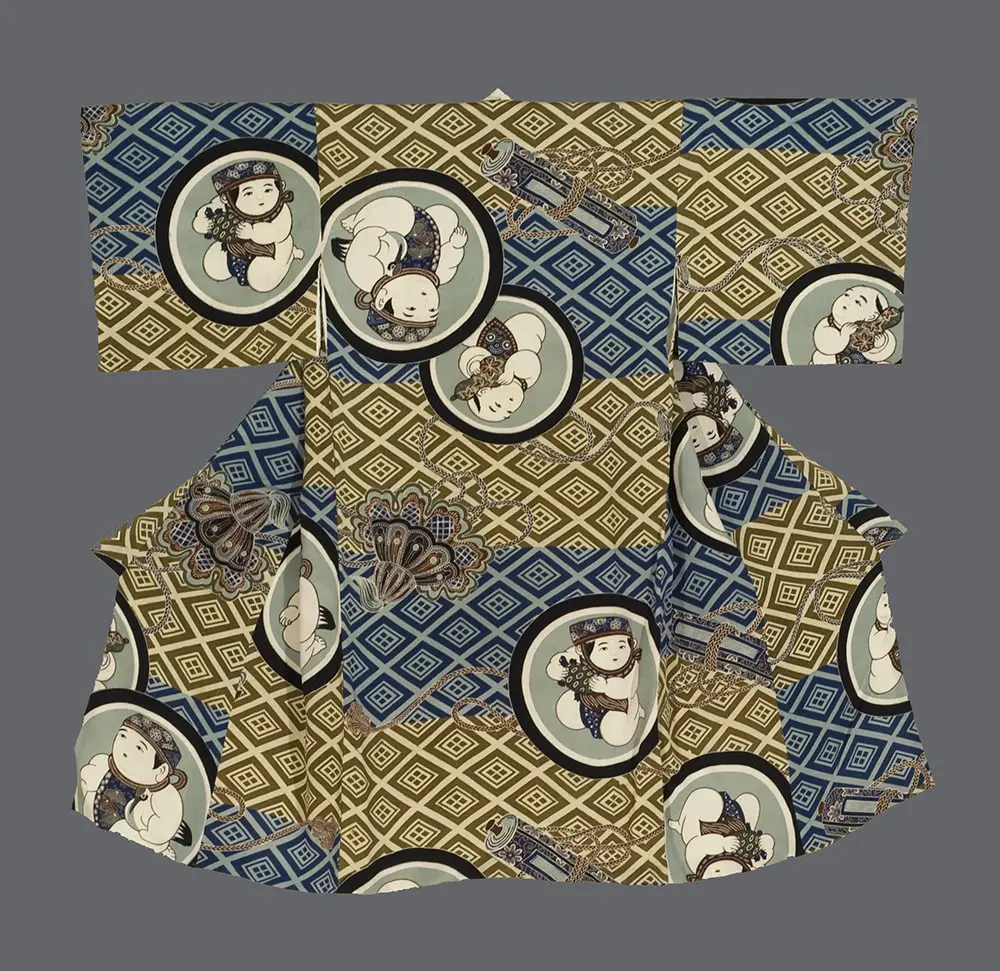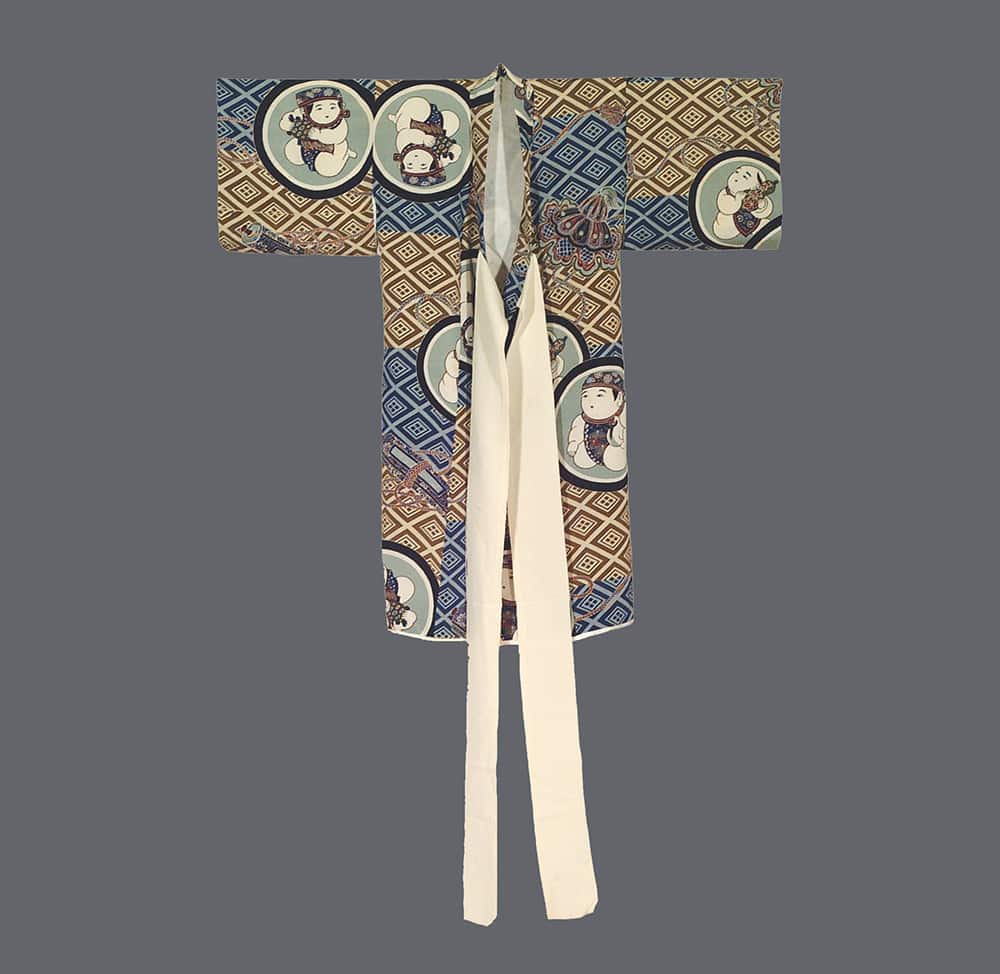This delightful small boy's ceremonial kimono exemplifies the playful yet auspicious design sensibilities applied to children's formal wear. Crafted from luxurious kinsha silk and decorated through silkscreen techniques, the garment features a sophisticated geometric background pattern of interlocking diamond shapes (shippo-tsunagi) in alternating bands of deep blue and golden brown, creating a rich visual foundation that speaks to both tradition and refinement.
The primary motifs consist of charming karako (Chinese children) depicted within circular medallions scattered across the kimono's surface. These pudgy, cheerful figures are rendered in the classical style associated with prosperity and good fortune, often shown holding or playing with various takara (treasures) that include scrolls, coins, and other precious objects. The artistic treatment reflects the influence of Edo period decorative arts while employing the more efficient silkscreen printing methods that became popular during Japan's modernization period.
Symbolically, this kimono represents layers of auspicious meaning perfectly suited for a young boy's ceremonial occasions. The karako motifs invoke wishes for the child to grow up healthy, prosperous, and blessed with good fortune, while the takara elements specifically reference the Seven Lucky Treasures of Buddhism and Shinto tradition. The geometric shippo pattern itself symbolizes infinite expansion and harmony, suggesting boundless possibilities for the young wearer's future. During this period of rapid cultural change in Japan, such garments served to maintain connection with traditional values and beliefs while embracing new production techniques, making this kimono both a beautiful artifact and a bridge between old and new Japan.
It measures 29 inches (74 cm) from sleeve-end to sleeve-end and stands at 28 inches (71 cm) in height.
.avif)






